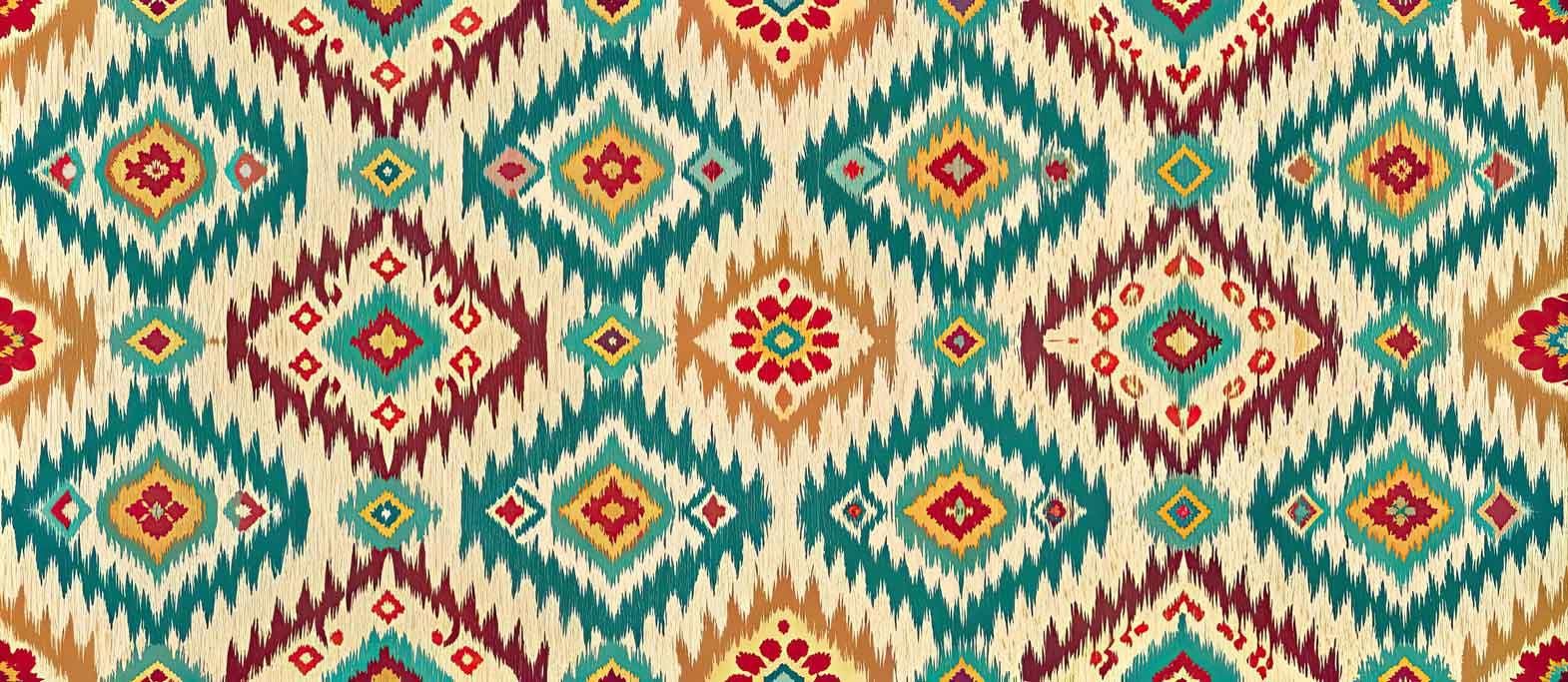Some ikats only concentrate on dyeing the weft threads, while others focus on coloring the warp yarns. The weft ikats are less precise, thus for more exact patterns, warp threads are dyed and it is difficult to tell in this case that ikat technique has been used. It appears more like block printing, following the precision of design. When weft yarn is dyed the design is clear only when the threads are woven together whereas when warp threads are dyed the design can be seen on the loom thus leaving room for precision. There is also a technique known as double ikat, under which both weft and warp threads are dyed. This technique is by far the most complex technique of ikat. Luckily for ikat technique, the labor, time, and complications involved in making the patterns have not deterred people around the globe to relish its richness and appreciate the aesthetics on the fabric. Peru, Japan, Yemen, Indonesia, India, Uzbekistan have been involved in promoting ikat technique since several years. Double ikats are mainly produced in India, Japan, and Bali. In some cultures, ikat has social, economic, traditional, and cultural importance. Like in Indonesia, some designs depict a particular cultural story. Indonesian women are involved in creating ikat designs that have been passed on to them as a legacy from their mothers. Cambodia, Myanmar, Philippines, and Thailand also have a long history of manufacturing ikat patterns.
Even the westerners have welcomed the ikat into the culture. Europe, America, France have also accepted ikat enthusiastically. Ikat on cotton, silk, linen, wool, et al are very popular. The design is used in clothing, upholstery, drapery, and decorative clothing.
However, ikat demands a lot of time. In countries like India, saree, which is the country's traditional costume, is made of silk on frameless looms. It takes as much as seven months for the weavers to complete making silk saree on the loom. The ikat dye process is very detailed and it takes up to a month to dye a warp. The problem that the weavers around the world encounter with this technique is that in this era of commercialization and current economic crisis, it has become almost unfeasible for the weavers and also the manufacturers to carry on with this age-old art of ikat. The process is exceedingly laborious and thus, it is becoming a dying art in countries like Indonesia. In the modern times, ikat cloth doesn't represent the honor and love that it did in the past. Today, it is more about money and production cost rather than a symbol of culture and tradition. The original ikat takes months and even years to complete.
Another reason for ikat's unexpected decline in sale is the cost. The labour, time and exclusiveness of ikat are some of the factors that contribute to its rising cost. In Asian countries, following the rise in tourism, it has become a common practice by the locals, to sell duplicate ikats, which are neither good in quality, nor durable. However, when buying original ikat from manufacturers and dealers in the Western countries, the prices can range from $ 400 to tens of thousands of dollars for a single piece. In some parts of the world, single pieces can be as expensive as $ 20,000. The five figure prices can fetch ikat pieces that are exceptional and of good quality. In some case, ikats that are very old can cost up to $ 100,000.
The weavers are also discouraged to continue producing ikat designs, as the impact of modern methods of dyeing and weaving have ensured that rich fabrics with richer designs are produced on a regular basis at much less time. This modernisation has had a grave impact on ikat production. A revival in the use of natural dyes is being encouraged by International Ikat Weaving Forum. Also the Forum is training young weavers in the production of eco-textiles that involves ikat designs and patterns.
Among some of the factors that go in favour of ikat are the growing interest of customers in the handloom clothing and involvement of some luxury brand stores in showcasing rich handloom fabric with exclusive designs like ikat, that show the hard work of the weaver. These factors are being promoted worldwide by some organisations involved in keeping the ancient art of ikat alive. The rise in demand is likely to grant more popularity to ikat pieces, thus guaranteeing a regular income to poor weavers involved in making ikat.
The need of the hour is to take ikta at a level where it becomes a sustainable industry. Efforts are going on and the results have finally started becoming visible in form of ikat becoming a regular part of ramp walks in international fashion shows and the beauty of this craft being admired by fashion connoisseurs. With changing business approach, the ikat weavers can expect a rise in demand in near future.
References:
1. Hsc.csu.edu.au
2. Apartmenttherapy.com
3. Wikipedia.com
4. Ikat.us
5. Allfiberarts.com








Comments